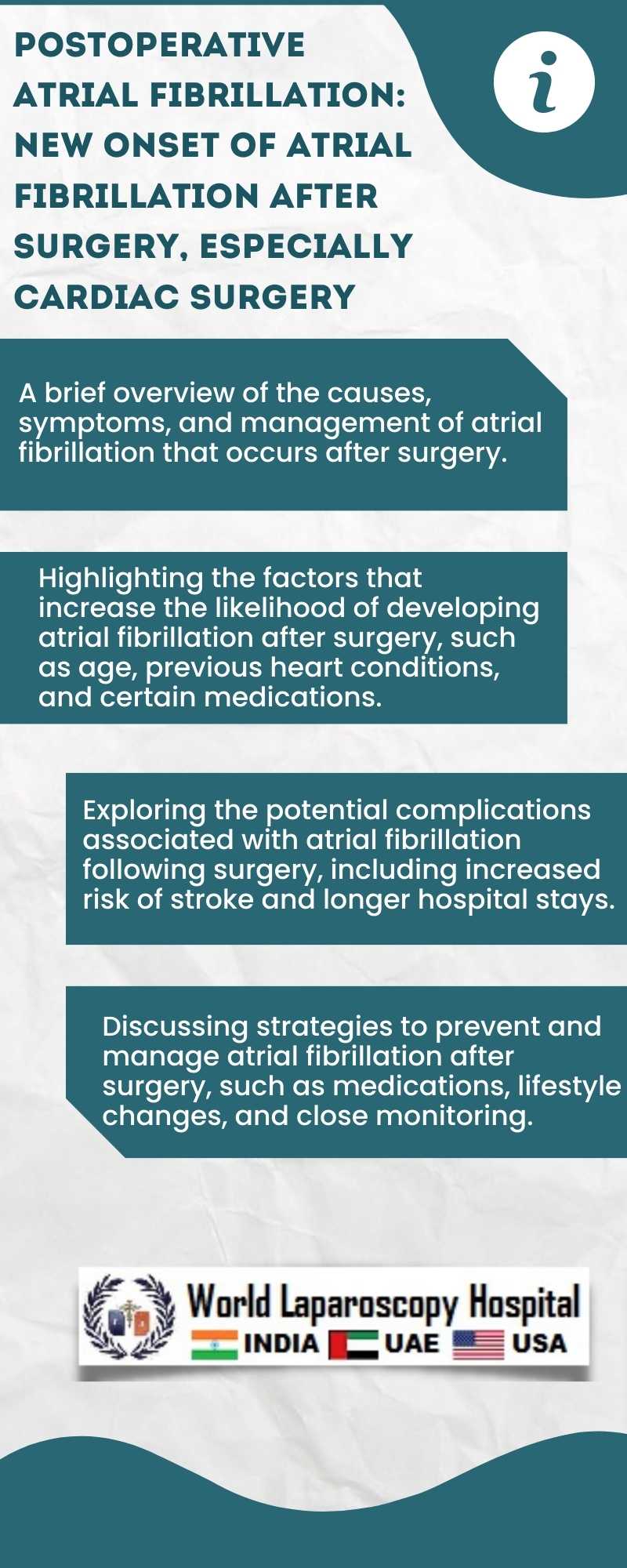Postoperative atrial fibrillation: New onset of atrial fibrillation after surgery, especially cardiac surgery
Postoperative atrial fibrillation (POAF) refers to the development of atrial fibrillation (AF) following surgery, particularly cardiac surgery. AF is the most common arrhythmia seen after surgery and can have significant implications for patient outcomes. While the exact mechanisms underlying POAF are not fully understood, several factors have been implicated, including inflammation, autonomic nervous system imbalance, and electrolyte disturbances.

POAF is a major concern in cardiac surgery due to its association with increased morbidity and mortality. Patients who develop POAF are at an increased risk of stroke, congestive heart failure, and other cardiovascular complications. Additionally, POAF can lead to prolonged hospital stays, increased healthcare costs, and a higher likelihood of rehospitalization.
The management of POAF involves both prevention and treatment strategies. Prevention strategies include optimizing patient risk factors, such as hypertension, diabetes, and obesity, and using prophylactic medications, such as beta-blockers and amiodarone, in high-risk patients.
Treatment of POAF focuses on controlling the heart rate and restoring sinus rhythm. Rate control can be achieved with medications such as beta-blockers and calcium channel blockers, while rhythm control can be achieved with antiarrhythmic medications or electrical cardioversion. In some cases, catheter ablation may be considered for patients with recurrent or refractory POAF.
It is important for healthcare providers to be aware of the risk factors for POAF and to monitor patients closely postoperatively. Early detection and management of POAF can help reduce complications and improve outcomes for patients undergoing surgery, especially cardiac surgery. Further research is needed to better understand the mechanisms of POAF and to develop more effective prevention and treatment strategies.

POAF is a major concern in cardiac surgery due to its association with increased morbidity and mortality. Patients who develop POAF are at an increased risk of stroke, congestive heart failure, and other cardiovascular complications. Additionally, POAF can lead to prolonged hospital stays, increased healthcare costs, and a higher likelihood of rehospitalization.
The management of POAF involves both prevention and treatment strategies. Prevention strategies include optimizing patient risk factors, such as hypertension, diabetes, and obesity, and using prophylactic medications, such as beta-blockers and amiodarone, in high-risk patients.
Treatment of POAF focuses on controlling the heart rate and restoring sinus rhythm. Rate control can be achieved with medications such as beta-blockers and calcium channel blockers, while rhythm control can be achieved with antiarrhythmic medications or electrical cardioversion. In some cases, catheter ablation may be considered for patients with recurrent or refractory POAF.
It is important for healthcare providers to be aware of the risk factors for POAF and to monitor patients closely postoperatively. Early detection and management of POAF can help reduce complications and improve outcomes for patients undergoing surgery, especially cardiac surgery. Further research is needed to better understand the mechanisms of POAF and to develop more effective prevention and treatment strategies.
2 COMMENTS
Dr. Deepak Jamwal
#1
Feb 26th, 2024 5:47 am
Treating POAF prioritizes heart rate control and sinus rhythm restoration. Beta-blockers and calcium channel blockers manage heart rate, while antiarrhythmics or cardioversion restore rhythm. Catheter ablation is an option for recurrent or refractory cases.
Dr. Abhishek Biswas
#2
Feb 27th, 2024 4:33 pm
Healthcare providers must vigilantly monitor patients postoperatively, particularly after cardiac surgery, for postoperative atrial fibrillation (POAF) risk factors. Early detection and intervention are paramount in minimizing complications and enhancing surgical outcomes. Further research is essential for advancing prevention and treatment approaches for POAF.
| Older Post | Home | Newer Post |

